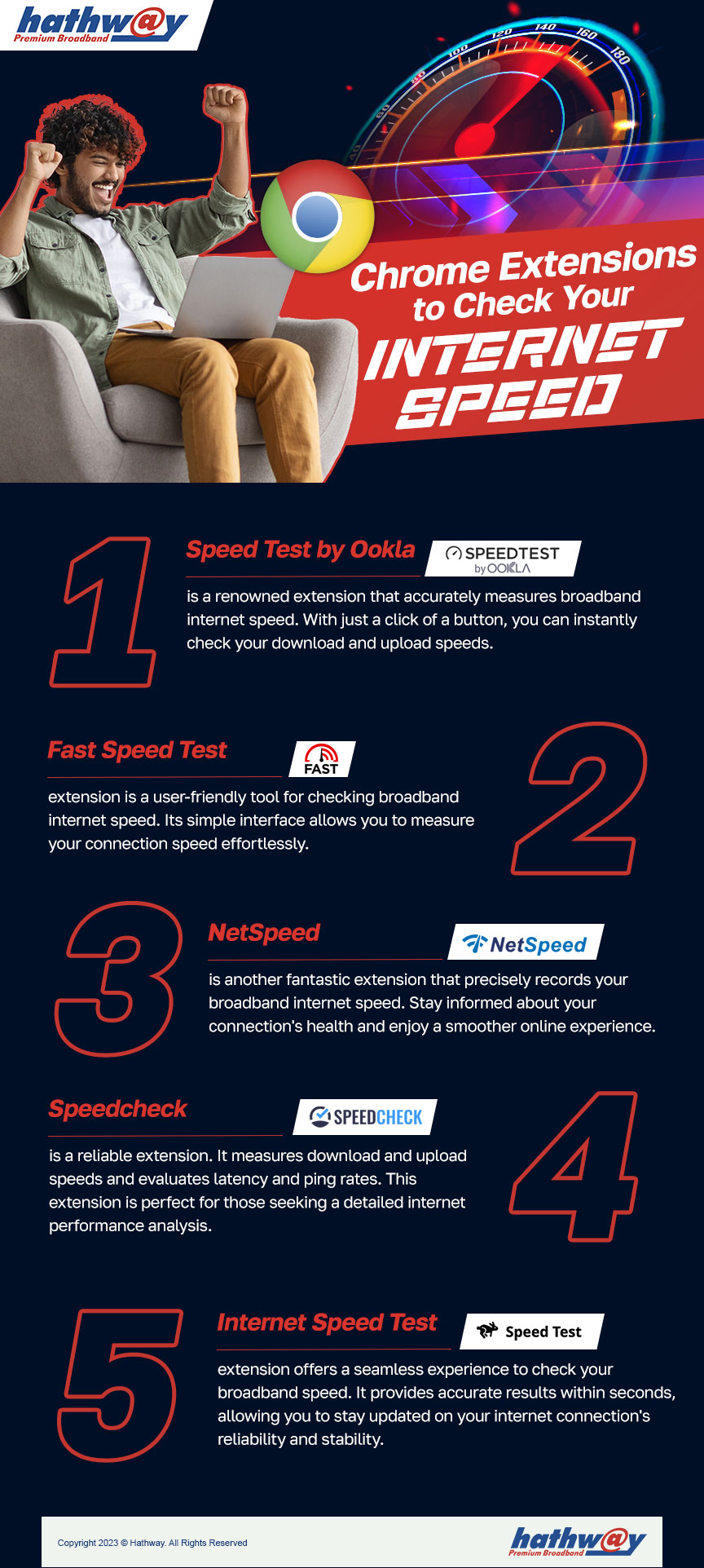Slow Internet? 7 Proven Fixes to Instantly Boost Your Wifi Speed

Why is my WiFi connection so slow—even when I have a high-speed plan?
You’re watching your favorite show, attending a Zoom meeting, or trying to upload work files—and there it is again:
Buffering. Lag. Disconnection.
Many users search every day: “How to fix slow WiFi at home?”
And here’s the truth:
- Sometimes it's your setup.
- Sometimes it's your plan not matching your usage.
- Sometimes it’s just time to upgrade to a smarter broadband connection.
Let’s fix that.
This blog will help you fix common wifi issues and instantly boost your internet speed:
- Solve common WiFi issues
- Speed up internet at home
- Know when it’s time to upgrade
7 Easy Fixes to Boost Your Internet Speed
1. Restart Your Router – It’s the Refresh Button Your WiFi Needs
Does restarting the router really help fix slow WiFi?
Yes. Like restarting your phone, this clears memory errors and network bugs.How to do it:
- Turn off your router and modem
- Wait 30 seconds
- Turn them back on
Pro Tip: Do this once a week for best results.
2. Reposition Your Router – WiFi Signals Hate Corners
Where should I place my router for better internet speed?
In the center of your home, high up and away from walls, doors, or metal objects.
Why it works:
- Fewer obstacles = stronger signal
- Central placement = wider coverage
Dual-band routers are optimized for better signal strength throughout your home.
3. Disconnect Unused Devices – They’re Stealing Speed
Can too many devices slow down WiFi?
Absolutely. Even idle phones, smart TVs, or smart plugs consume bandwidth in the background.What to do:
- Log into your router dashboard
- Remove inactive or unneeded devices
More free bandwidth = faster internet speed for devices that matter.
4. Switch to 5GHz Band – Faster, Smarter WiFi
Should I use 2.4GHz or 5GHz WiFi?
Use a 5GHz WiFi router for faster speeds, especially in close range (like video calls, gaming).How:
- Open your WiFi settings
- Select the 5GHz option if supported
Hathway’s dual-band routers support both 2.4GHz and 5GHz for flexible performance.
5. Update Your Router Firmware – Speed + Security
How do I update my router for better performance?
Go to your router dashboard and check for firmware updates—it’s often one click.Why it matters:
- Updates fix bugs, improve speed and enhance security
Hathway users: Our support team can guide you step-by-step.
6. Identify Bandwidth Hogs – And Manage Them Smartly
Which apps or devices slow down my WiFi the most?
Streaming platforms, gaming consoles, and downloads are top culprits.
Use tools like your router’s dashboard or apps like REZRV to:
- Monitor usage
- Prioritize essential apps (like Zoom or Teams)
Less bandwidth waste = smoother experience.
7. Upgrade Your Plan – Because Your Internet Habits Have Changed
When should I upgrade my broadband plan?
If you’ve tried everything above and still face buffering, lag, or disconnections, it's time.You’ve evolved. Your internet should too.
Upgrade if:
- You work from home or attend online classes
- You stream in HD or 4K
- You use multiple devices daily
- You have smart home gadgets
Hathway users: Hathway users: Upgrade your plan now
New here? Explore our high-speed WiFi plans with free installation + dual-band routers included.
Why Fast Wifi Is Essential in 2025
A fast WiFi connection is no longer a luxury—it’s essential for work, entertainment, and everyday life. From video calls to 4K streaming, your online experience depends on uninterrupted internet speed.
| Use Case | Why You Need Fast Speed Internet |
|---|---|
| Remote Work & Video Conferencing | Stability during calls & uploads |
| 4K/8K Streaming & OTT Platforms | Buffer-free entertainment experience |
| Smart Homes & IoT Devices | Seamless connectivity across all devices |
| Cloud Gaming & Multiplayer Platforms | Low-latency response for immersive gaming |
| Cloud Storage & Drive Sync | Fast uploads & real-time file access |
| Content Creation & Uploads | Zero-delay while uploading Reels, Shorts, or YouTube videos |
| Shared Household Connections | Smooth multi-device usage without interruptions |
| Security Devices & CCTV Monitoring | Real-time video feeds & remote access |
Quick Recap: Fix & What It Solves
A slow wifi connection isn’t always about your internet service provider—sometimes, small fixes make a big difference. Here’s a quick recap to fix slow WiFi on your own.
| Fix | Why It Matters / What It Solves |
|---|---|
| Restart your router | Clears network memory glitches and refreshes your internet signal |
| Reposition your router | Eliminates WiFi dead zones and boosts signal strength |
| Disconnect idle devices | Frees up bandwidth used by background devices |
| Use 5GHz band | Delivers faster speeds in high-traffic or crowded environments |
| Update firmware | Improves router stability, speed, and security |
| Manage bandwidth hogs | Prioritizes important apps and devices |
| Upgrade WiFi plan | Resolves speed issues from outdated or insufficient plans |
Still Facing Slow Wifi Speeds?
Let’s fix it for you.
Still struggling with slow wifi speeds or buffering? If you are a Hathway existing customer or not, it’s time to upgrade to the high speed wifi plan that matches your lifestyle demands.
Already with Hathway?
- Check your wifi plan via the Hathway Portal
- Contact our 24×7 support or chatbot
- Ask for a wifi plan upgrade based on your usage
Not on Hathway yet?
- Discover broadband plans with blazing speeds up to 300 Mbps
- Free installation + smart dual band router
- Join thousands who’ve upgraded their digital life
Try These Chrome Extensions to Test Your Speed in Seconds

Frequently Asked Questions
Why is my WiFi Connection slow even with a high speed plan?
Slow WiFi connection could be due to poor router placement, old hardware, too many devices connected or plan limitations. Check your internet speed, move your router and upgrade your wifi plan.
How to fix slow WiFi Connection at home?
To fix slow wifi connection, Restart your router, move it, disconnect extra devices and switch to 5GHz. Still slow? Upgrade your broadband plan.
What devices consume the most internet speed?
Streaming apps (like Netflix, HotStar, Amazon Prime or YouTube), online gaming consoles, large downloads and smart devices consume internet bandwidth in the background and cause network congestion.
Use your router dashboard or bandwidth monitoring tools like REZRV to check and prioritize usage.
How to boost the WiFi signal in my home?
Place your router in a central elevated spot with no obstructions. Use dual band (5GHz) routers, disconnect smart devices or upgrade broadband plans.
2.4GHz or 5GHz WiFi for faster internet?
Use 5GHz for faster wifi speeds and better performance over short distances—ideal for gaming, streaming and video calls. Use 2.4GHz for broader coverage across larger areas of your home.
When to upgrade my broadband plan?
If you’re facing daily lags during streaming, calls or downloads even after troubleshooting—it’s time to upgrade to smarter broadband plans.
What wifi speed do I need for remote work and streaming?
For smooth video calls and 4K streaming, aim for at least 100 Mbps. If you’re in a multi-user home, 200-300 Mbps is ideal for uninterrupted performance.
